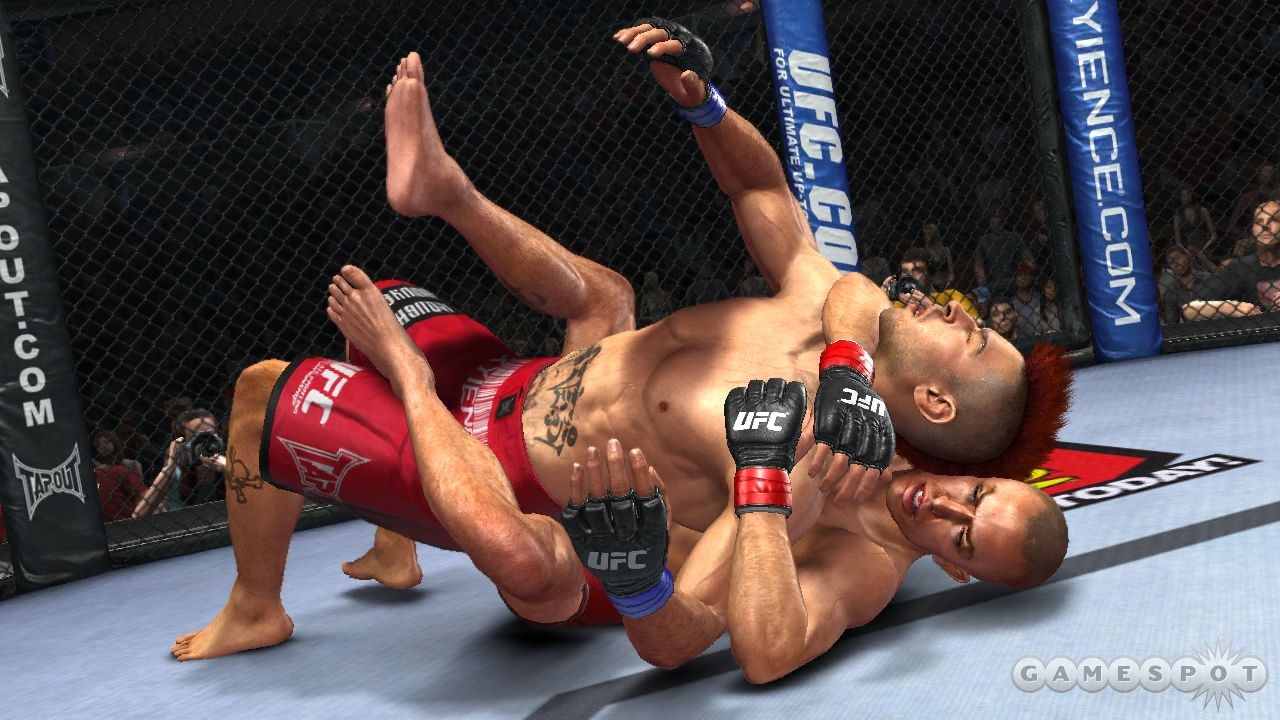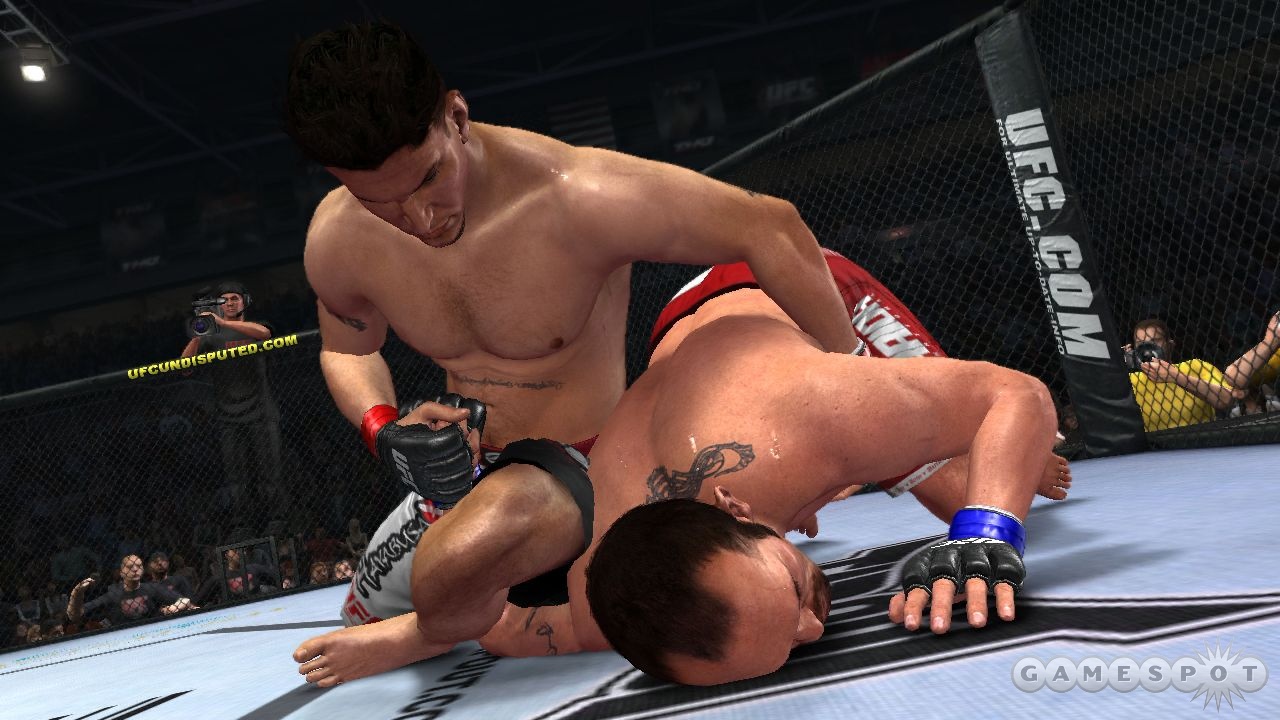UFC Undisputed 2010 Exclusive Hands-On
We go all three rounds in a look at the new gameplay and Career mode changes to this hit fighter.
Last year's UFC Undisputed was one of those critical and commercial successes that managed to put a smile on the face of everyone who played it. Sure, it was one of those primal grins that come as a direct result of knocking out a grown man with a single, solid kick to the head, but there's no denying that the game was well made. A year later, the question naturally arises: How do THQ and developer Yuke's go about improving the experience for 2010? The answer is an across-the-board scattering of tweaks and additions, whether they came from fan suggestions or were features that, for whatever reason, didn't quite make it into last year's game.
Starfield May Update Disney Dreamlight Valley – Thrills & Frills Update Trailer LEGO Fortnite | Star Wars Rebel Adventure Cinematic Trailer Apex Legends - Official Alter Legend Animated Reveal Trailer | "Based on a True Story" Batman: Arkham Shadow | Official Cinematic Teaser Trailer Mullet MadJack - Official Gameplay Trailer EARTH DEFENSE FORCE 6 - Official Release Date Reveal Trailer Street Fighter 6 - Akuma Arrives! Fighting Pass Reveal Trailer SMT V: Vengeance Is Much Bigger Than You Think Which Fallout Game You Should Play First Funko Fusion - Official Reveal Trailer Star Wars: Hunters -Official Launch Date Reveal Cinematic Trailer
Please enter your date of birth to view this video
By clicking 'enter', you agree to GameSpot's
Terms of Use and Privacy Policy
Perhaps the biggest area of focus for UFC Undisputed 2010 is the Career mode. Anyone who played the last game should find that to be great news because if there's one area where UFC 2009 fell short (aside from laggy online play at the time of release) it was those long stretches of tedium during Career mode when it felt like you were doing more menu navigation and e-mail reading than fighting. Aside from cleaning up the menus, the team is looking to improve Career mode by focusing on "player investment," to borrow a term from THQ's UFC project manager Neven Dravinski. Keeping you more invested in the career starts with the type of fighter you make on your own in create-a-fighter. Last year's game had you choose a striking style and a grappling style to define your character's fighting technique, but UFC 2010 is much more open to player customization. You can now select from a basic template of fighting styles then go in and manually choose every move your player is capable of performing in any given situation. You can mix and match various techniques to create a hybrid martial arts master who appears as though he's spent time training on every last corner of the globe. It's what Dravinski refers to as an "a-la-carte system" for giving players the chance to define their own player, and, thus, their own play style.
You've got a lot more control over the type of character you create on a visual level, as well. Tattoos and logos are added using a drag-and-drop technique, replacing last year's menu-heavy slot system. You can create custom colors, as well as choose from an expanded number of hairstyles and body types. You can also customize your various taunts, handshakes, and post-match outfits. Those choices can be as subtle as a pre-match glove-touching animation or as ostentatious as making a bright yellow martial arts gi to wear after a fight. You can create a character with an orthodox or southpaw stance and still choose his dominant hand regardless of that orientation. To make a long story short: There are a lot more options this year and a much more streamlined menu for choosing them.
But one of the create-a-fighter options that sheds the most light on what THQ and Yuke's want to do with Career mode is selecting your character's voice. As part of that whole player investment idea, the development team wants to paint a better picture of your fighter's personality to make you feel like you are part of his story. So instead of just hearing him grunt during matches, you'll hear conversations between your fighter and various other people during cutscenes that pop up throughout the course of your career. These include pre-fight pep talks from your trainer, as well as occasional appearances from UFC head Dana White when he drops by your gym with good news. You'll also have a chance to answer interview questions, as well as choose how respectfully you interact with the opponent you're facing during a big upcoming match in the weigh-in scenes.

Career mode is also more of a rags-to-riches story this year. Last year's game immediately put you into the UFC, but now, you'll have to start in the lower level World Fighting Alliance (WFA)--the minor leagues, essentially. You'll once again battle your way up the totem pole, unlocking new sponsorships and working on your skills in sparring matches. The way you upgrade those skills is largely the same, but there are a few differences. You'll want to keep an eye on those skill levels because your stats will decay over time if neglected. In addition to that, your fighter will age, and the effects of previous fights will act as a big factor leading into your next match. But it's not all stuff that has a negative impact on you, as you've been given a number of other options, such as switching weight classes if you feel you've sufficiently dominated one weight level and taking part in discipline-specific training camps to really focus on certain techniques in a way you couldn't last year.
Other various and sundry additions punctuate the UFC Undisputed 2010 Career mode, but it's about time we talk about the gameplay. Last year's game successfully married deep combat with relatively simple (or at least intuitive) controls. That control scheme remains largely intact for 2010, though with a few changes. It's that same core control scheme, where your four limbs are mapped to the four face buttons, with modifiers for high/low attacks and a blocking ability. New this year is the ability to sway away from attacks with your feet firmly planted in place, contrasting with last year's side-stepping ability. Swaying is a simple matter of holding the right bumper, or R1, and moving the left stick. Imagine your fighter is on the left side of the screen. Moving left on the stick causes him to sway back; up will have him sway to his left; and down will have him sway to his right. It might be tough to wrap your head around at first, but we found it to be a simple system to learn with a controller in hand, as well as a pretty fun way to nimbly dodge attacks. There's also an interesting risk-reward element to it. For example, swaying to your right to avoid an opponent's right jab is helpful to you, but if you misread it and he's actually throwing a left, it can be pretty devastating.
The ground game is another area that's seen a lot of changes. The big one is that flash submissions are now a possibility, so if the dice roll your way during a random twist and turn on the ground, you might be able to quickly force your opponent to tap out much the same way you can quickly knock out an opponent in the first 10 seconds of a match if a punch is perfectly landed. A new indicator to let you know who's winning a submission hold is the way the camera zooms in if the one doing the holding is successfully applying increasing pressure and zooms out if the other guys is successfully countering a hold. In addition, the system of rapidly pressing buttons to get out of a hold has been done away with, as both players now must rapidly turn the right analog stick (no matter which side of the hold you're on) to win those scenarios.

If flash submits are one way of keeping you alert during the ground game, the new ways of switching holds and positions are a couple of other means to that same end. Firstly, you can now switch the submission hold you're doing without first breaking the hold. You just go from one hold to the other, forcing your opponent to turn the analog stick in the opposite direction of what he was just doing if he wants to break free. Secondly, there's the new sub-position system. If you're on the ground pummeling someone, you can move your body back ever so slightly to get a somewhat different angle on him without fully changing positions. This gives the attacker more ways to contort his body and explore the best way to get leverage on his opponent if he doesn't want to fully switch positions on the floor.
Another key difference in gameplay is the effect of the cage. The caged boundaries of the octagon weren't a factor last year, but now, players can easily get pinned back when their backs gets too close to the wall. Naturally, this poses a dangerous challenge to anyone who's not in the dominant position in that situation. On a more subtle level, your neck can get craned to the side if you're on the receiving end of a ground-and-pound attack next to the cage, which makes it even more brutal to look at those scenarios. Helping that brutality is the fact that blood looks more realistic this year and can even play a role in the fight with the addition of doctor stoppages (those moments when a doctor steps in to determine if an injury is too severe to continue).
Finally, there's the roster. In addition to the names you've seen in screenshots and preorder deals, we can now confirm six previously unannounced fighters who are appearing in UFC 2010. Making for a mixed list of fighters who did and did not appear in the last game are Georges St-Pierre, Dan Hardy, Shane Carwin, Jon Fitch, Thiago Alves, and Clay Guida. Altogether, it looks like fans of UFC 2009 are in for a real treat this year, as an intriguing Career mode and some initially pleasing gameplay changes have us eagerly looking forward to the final game. You can expect it to arrive this May on the Xbox 360 and PlayStation 3.
Got a news tip or want to contact us directly? Email news@gamespot.com
Join the conversation